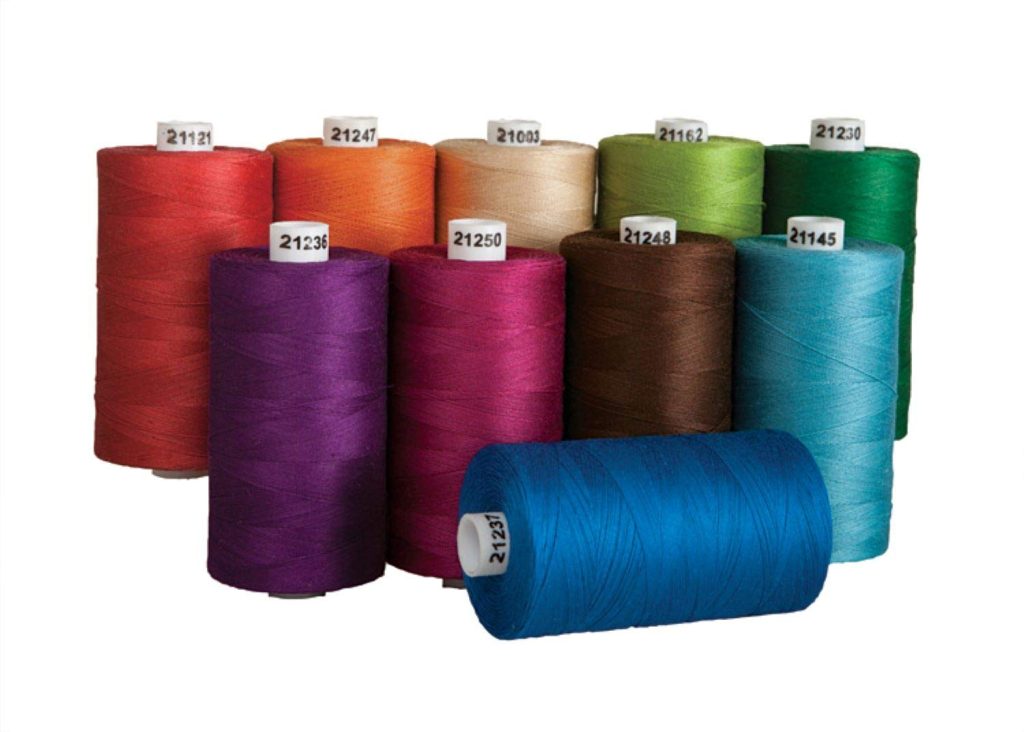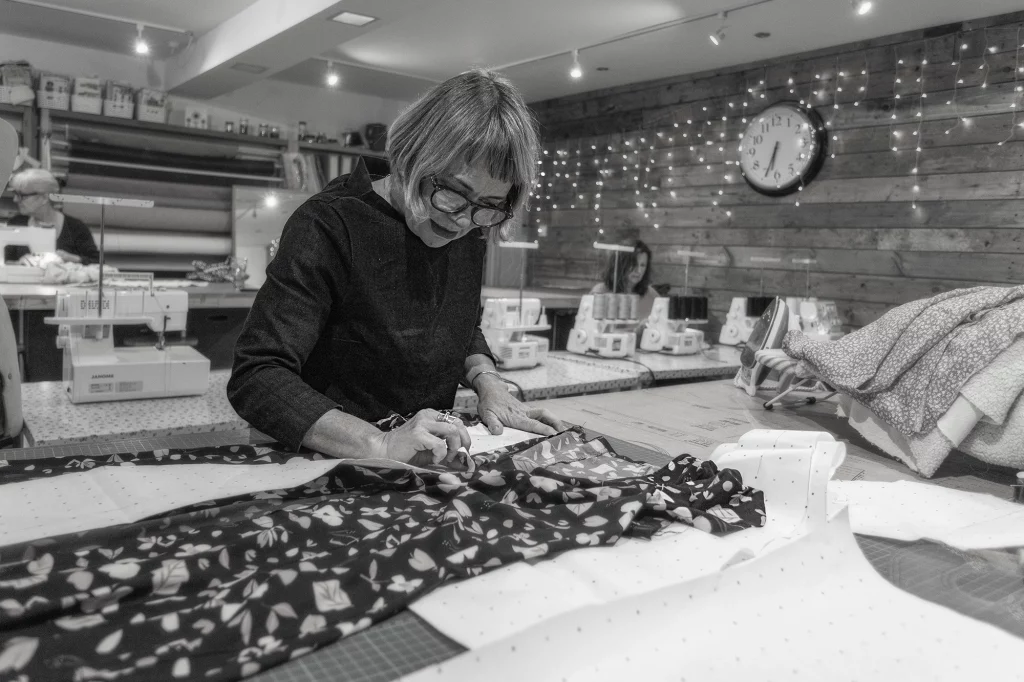Cotton Thread
Cotton thread is one of the most traditional and commonly used types of thread, valued for its natural fiber composition and soft texture. It is suitable for lightweight to medium-weight fabrics and is often preferred for quilting and garment construction. Cotton thread is known for its smooth, matte finish and is typically mercerized, a process that strengthens the thread and adds a slight sheen. It is excellent for use in both hand and machine sewing, especially when working with natural fabrics like cotton, linen, or wool. However, it lacks the elasticity of synthetic threads, which can make it less ideal for stretch fabrics.

Corespun Polyester (Poly-Wrapped Poly Core)
Corespun polyester, also called poly-wrapped poly core, is a hybrid thread that combines the best attributes of cotton and polyester. The thread consists of a polyester core wrapped in cotton or polyester, which provides strength and durability while maintaining a smooth finish. It is widely used in sewing because of its versatility and ability to blend well with both natural and synthetic fabrics. Corespun polyester is highly durable, resists shrinkage, and has a slight elasticity, making it suitable for a range of applications, from apparel to home décor projects.
Filament Polyester Thread
Filament polyester thread is made from continuous strands of polyester fibers, offering excellent strength and a smooth, glossy finish. This type of thread is often used in high-speed sewing machines because of its ability to withstand friction and tension. It is ideal for sewing on synthetic fabrics or in industrial sewing applications where durability and strength are essential. Filament polyester thread is also resistant to UV rays, mildew, and chemicals, making it a good choice for outdoor and marine projects. Additionally, it maintains its color well, even after repeated washings or exposure to harsh environments.
Monofilament Polyester Thread
Monofilament polyester thread is a single, continuous strand of polyester, much like fishing line. It is nearly invisible once sewn, making it an excellent choice for applications where visible stitching would detract from the appearance, such as hemming sheer fabrics or sewing lace. It is also commonly used in quilting and for lightweight or delicate fabrics. Monofilament thread is strong but can be stiff and somewhat tricky to work with, as it tends to stretch and can melt under high heat. Care must be taken when ironing or pressing items sewn with monofilament thread.
Spun Polyester Thread
Spun polyester thread is made by spinning short polyester fibers together to form a strand, resulting in a soft, cotton-like feel. Unlike filament polyester, spun polyester has a matte finish and mimics the appearance of natural fiber threads, making it ideal for general sewing and garment construction. This thread is strong, durable, and resistant to shrinking and fading. It works well with both natural and synthetic fabrics, providing a balanced combination of strength and softness. Spun polyester is a versatile choice for many sewing applications, from apparel to home décor.
Rayon Thread
Rayon thread is known for its high sheen and vibrant colors, making it a popular choice for decorative stitching and embroidery. It is a cellulose-based fiber, derived from wood pulp or cotton, that produces a silky, smooth texture. Rayon thread is less durable than polyester, and it tends to break under high tension or repeated wear. However, its ability to produce brilliant, glossy stitches makes it a favorite for machine embroidery, appliqué, and other embellishments. Because it is not as strong as polyester, rayon thread is not ideal for seams that will endure a lot of stress or frequent washing.
Nylon Thread
Nylon thread is a synthetic fiber known for its strength, elasticity, and resistance to abrasion. It is often used for sewing heavy-duty fabrics such as leather, canvas, and upholstery. Nylon thread is strong and flexible, which makes it an excellent choice for projects that require both durability and stretch. It is commonly used in industrial sewing, upholstery, and outdoor gear, such as tents or awnings. However, nylon thread can be affected by UV light, becoming brittle over time when exposed to the sun. As a result, it is not always the best choice for outdoor applications unless UV-protected versions are used.
Metallic Thread
Metallic thread is used to add sparkle and shine to decorative stitching and embroidery. It is made by wrapping a thin layer of metal, often aluminum, around a core of nylon or polyester. Metallic thread is popular for embellishing garments, accessories, and holiday-themed items. Although it produces stunning visual effects, metallic thread can be challenging to work with. It tends to break or fray more easily than other threads and requires careful handling, often with a larger needle or a specialized sewing machine setting. Proper tension adjustments and the use of a lubricant or silicon-treated spool can help reduce breakage.
### Conclusion
The choice of thread in sewing can significantly impact the quality and durability of the finished project. Whether you are selecting thread for its strength, elasticity, or aesthetic qualities, understanding the differences between various types of threads—such as Cotton, Polyester, Rayon, Nylon, and Metallic—can help ensure the best results for your sewing endeavors. Each type of thread offers unique benefits and is suited to specific fabrics and techniques, making it essential to choose wisely based on the demands of your project.

